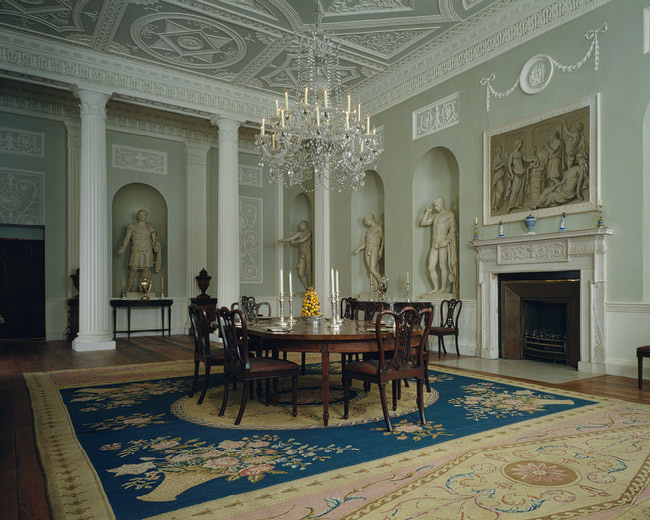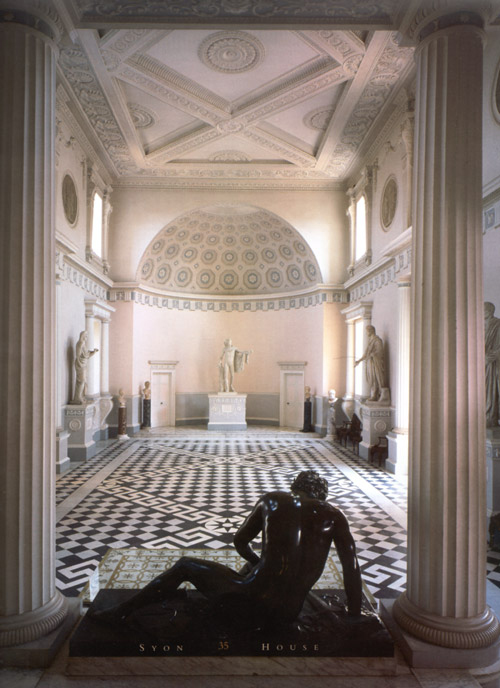When Mount Vesuvius erupted in 79 A.D. , the ensuing earthquake and volcanic ash buried the cities of Pompeii and Herculaneum until their rediscovery in the eighteenth century. When the ruins came to light, they caused a revolution in taste-stripping away rococo gilt, reshaping the female figure, and leaving a deposit of pseudo-Greek temples from Moscow to Mississippi-although what sometimes passed for “classical” would have bewildered the ancients.
…With each passing year the attraction of Pompeii and Herculaneum grew stronger. There were constant new surprises and the continual hope, rarely disappointed of more to come. The changing pattern revealed by the excavations meant that the spectacle never staled, and each fresh find added to the tourist appeal. Classicism had become “le dernier cri” and the race was on to exploit and further the classical fashion. Josiah Wedgwood was one of the first prophets of the new art form, whose vision of a market “randy for antique” helped propel , promote and serve the new fashion.

"Lansdowne House, designed by Robert Adam and situated at the southwest corner of Berkeley Square, London, was begun for Prime Minister John Stuart, third earl of Bute, who sold it, unfinished, about 1765 to William Petty-Fitzmaurice (1737–1805), earl of Shelburne, later first marquess of Lansdowne and a leading Whig statesman of the period. The house was completed from Adam's designs for Lord Shelburne in 1768 and was a meeting place for Whig social and political circles in the eighteenth and nineteenth centuries. Source: Robert Adam: Dining room from Lansdowne House, London (32.12) | Heilbrunn Timeline of Art History | The Metropolitan Museum of Art
Others were also responding to the demands of the new market. As the rage for the antique and the excitement over Herculaneum and Pompeii grew, the proliferating decoration, the exuberant colors, and the universal gilding of rococo were banished; the splendors of baroque became distasteful ; the intricacies of “chinoiserie” lost their favor. The new fashion was eagerly taken up by architects and interior decorators, and a trail of painted interiors, based on the frescoes of Pompeii and Herculaneum soon stretched across the length and breadth of the Continent: from Robert Adam’s ceilings at Mellerstain and Syon in Britain to Marie Antoinette’s apartment in the new Louis Seize style at Fontainbleu; from the Czernin Palace at Vienna to Catherine the Great’s palace at Tsarkoe Selo in Russia.
Such a mode had, of course, its critics. They likened the new style with its cameos, medallions, and filigree ornament to “The Twelfth Night decoration of a pastry cook,” or mocked it as “the knickknackery of the cabinetmaker,” and scorned the “rampant foliage of antiquity”. But the antique was proof against such envy. In some cases it was spurned on by it: as Mrs. Montagu smugly congratulated herself in 1767 on her new Adam decorations, they “are pretty enough to make me a thousand enemies. Envy turns livid at the first glimpse of them”.
The classical vogue never, however, enjoyed a complete monopoly. Some were frankly unappreciative of the antique: Napoleaon’s soldiers, having captured Naples, whiled away the hours practicing with their cannon on a magnificent equine marble, and, as one might expect from Napoleonic artillery, they were accurate and shot off its head. But even among the discerning their were pockets of resistance. Rococo was a long time a-dying in some places, “chinoiserie” still had its adherents, and Gothic was even showing signs of revival. Horace Walpole built Strawberry Hill in Gothic, and Beckford did the same at Fonthill; and the Pagoda at Kew was not the only example of the Chinese style.
But for the most part these were charming backwaters, whose importance in relation to the taste of their times has often been exaggerated. The mainstream of European taste was flowing strongly toward the antique, and Horace Walpole’s Strawberry Hill was, as he said himself, merely a temporary infidelity from the true mistress of the age, the antique. Others were more faithful: the Adam brothers, Chalgrin, and Schinkel scarcely deviated from the antique pattern in their architecture; and London, Paris and Berlin were soon dotted with handsome buildings of wholly classical design.

"Contemporaries found it master, able to translate their perceptions of comfort and utility, emerge from such a specific feature of English architecture. Photo: "ROBERT ADAM" Rationalism, clothed in the forms of Greek antiquity, defined the essence of the creative method of Adam. The appearance of these buildings was to be characterized by a noble simplicity of the monuments created by the democratic Greece. To the side facades of the palaces, as well as for facial facades of bourgeois houses are characterized by large windows with wide fan-shaped timpanami platbands occurring continuously and over doors. Favorite scheme plan for the residences of the magnates in the shape of Adam′s letters "H" and "B". In the center was placed a round or oval room, which opens the doors to the two parallel enfilade of rooms, ..."
No one had a greater influence on this sphere than Robert Adam: indeed he is often taken as the most complete expression of the neoclassical revival. A cherished friend of Piranesi and possible an acquaintance of Winckelmann, he has spent three years in Italy and Dalmatia in order to perfect his knowledge of antique architecture. He returned to England with bold plans and was soon the architect of the hour. By the 1770’s , the conquest of Robert Adam and his brother James was complete: the rich had Adam and the middle classes had Adamesque. There was complete coherence of taste.







 COMMENTS
COMMENTS